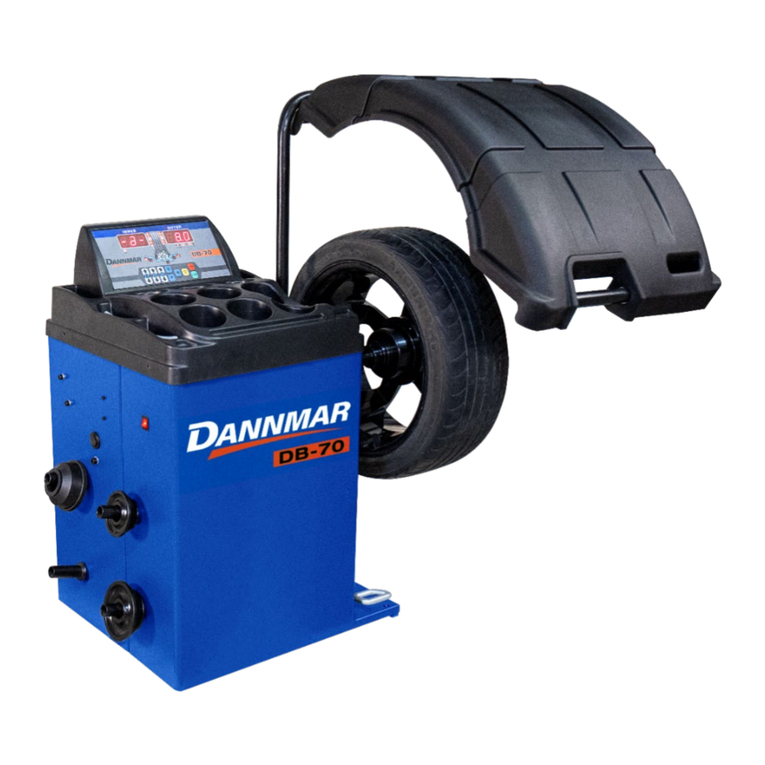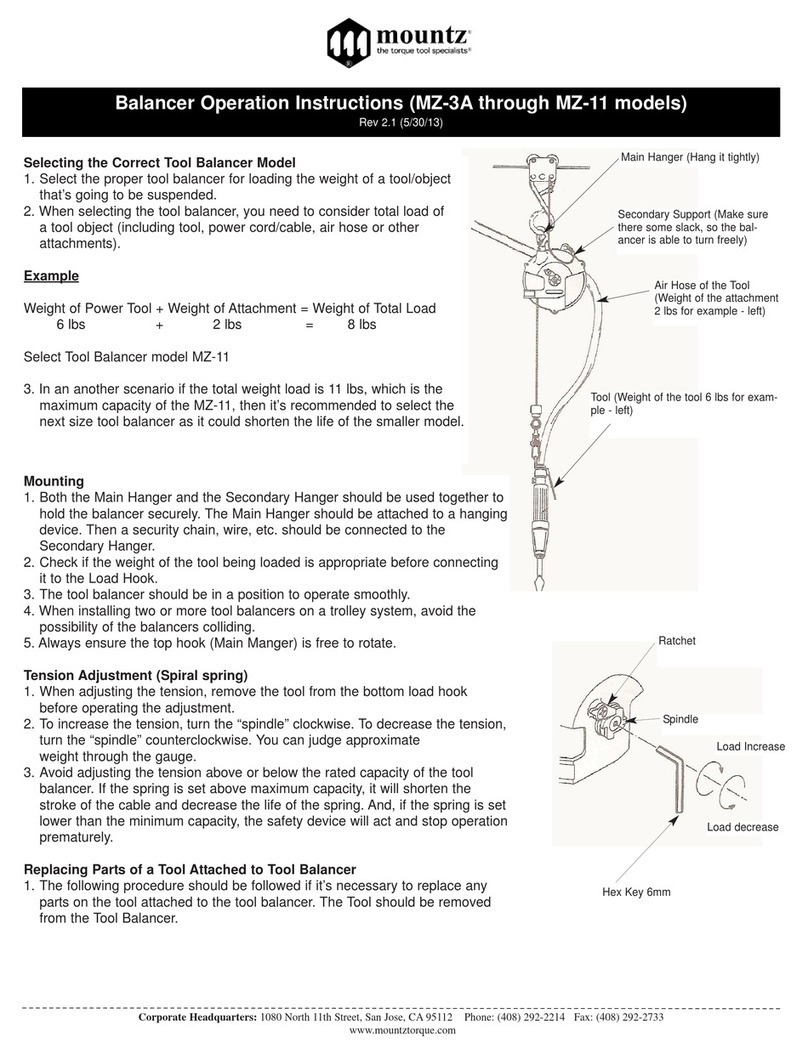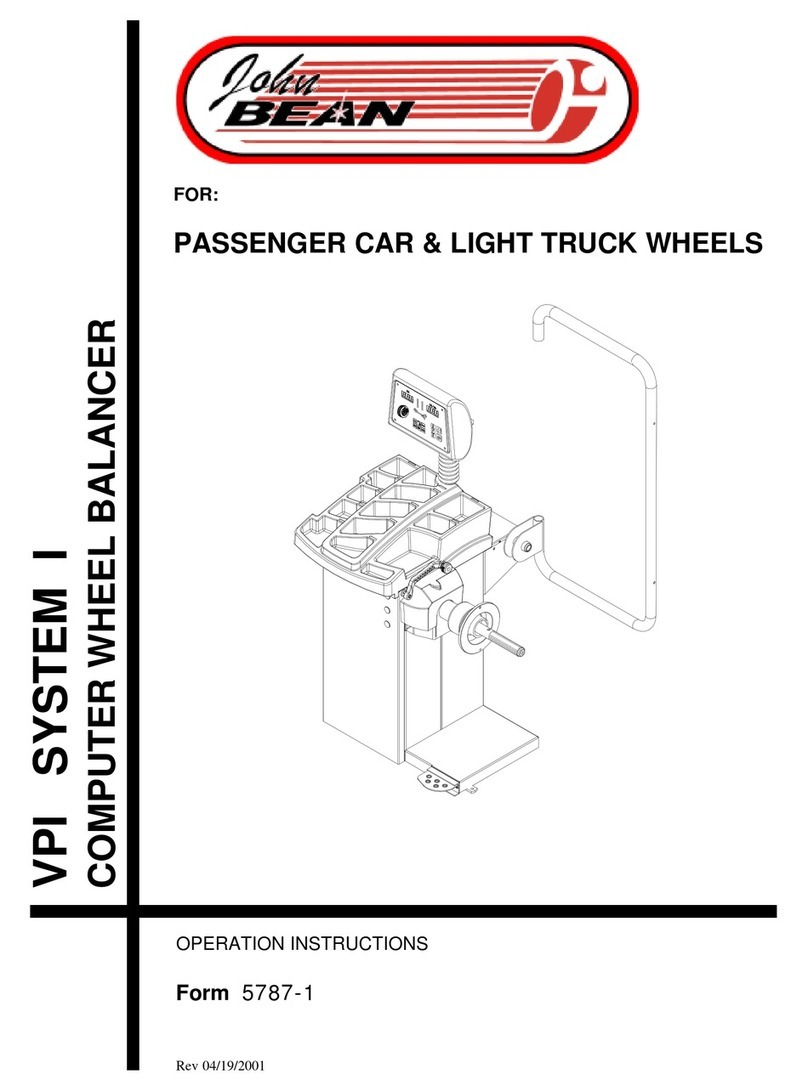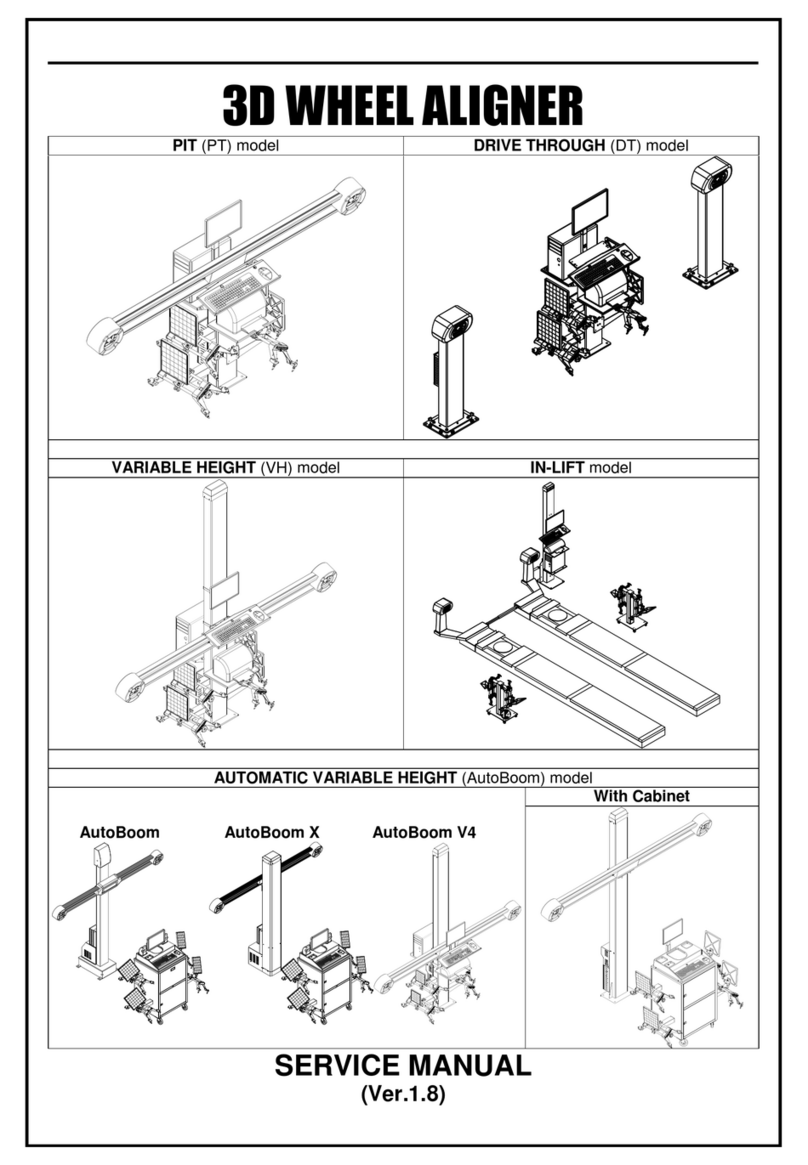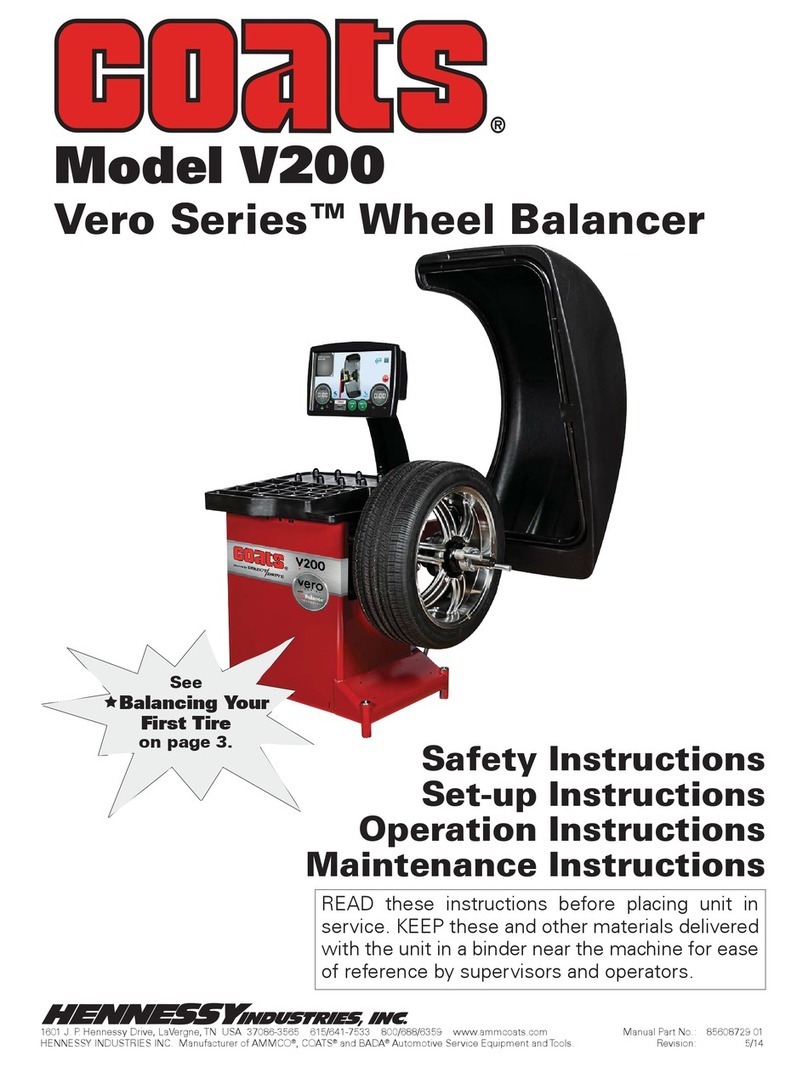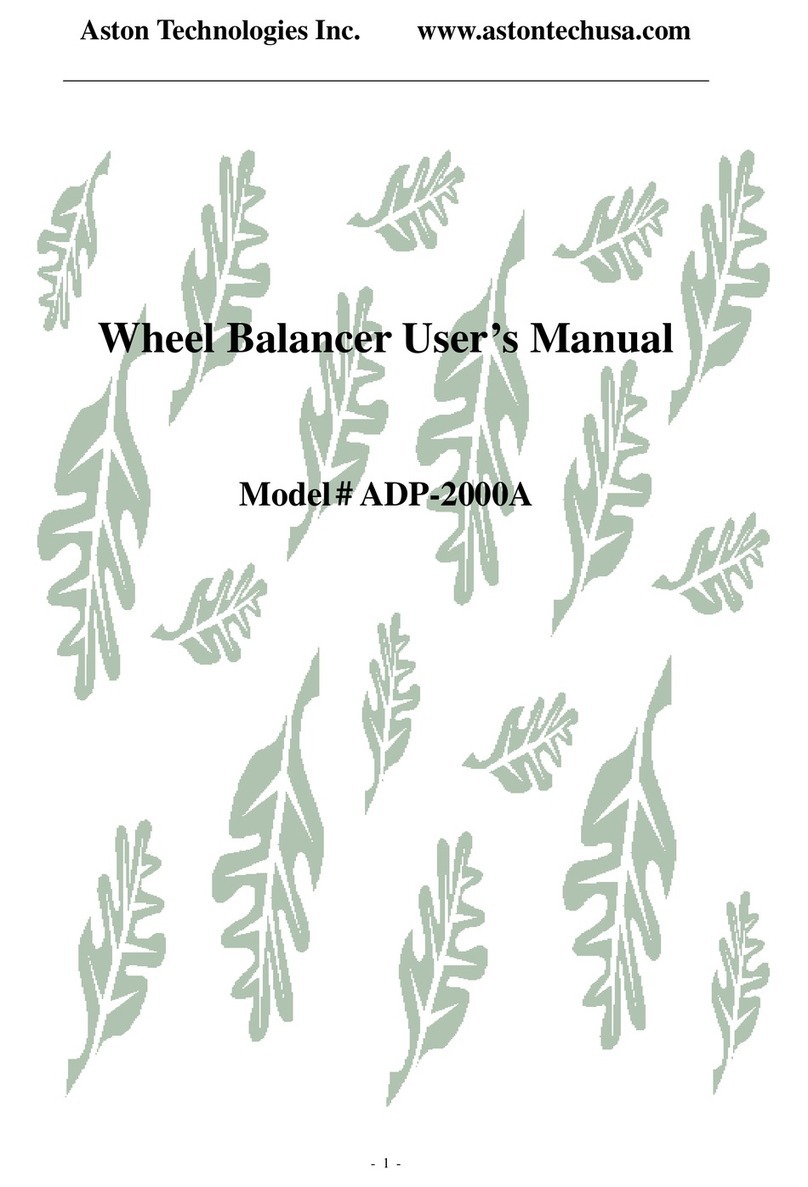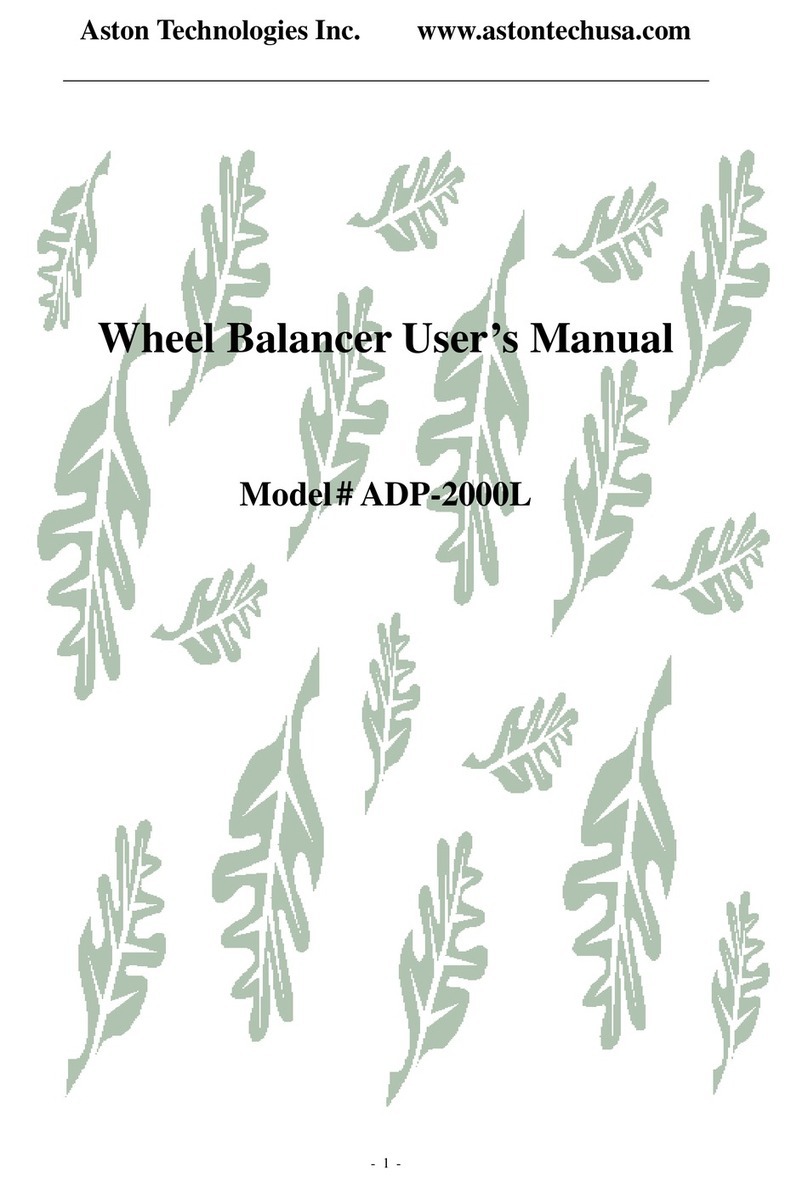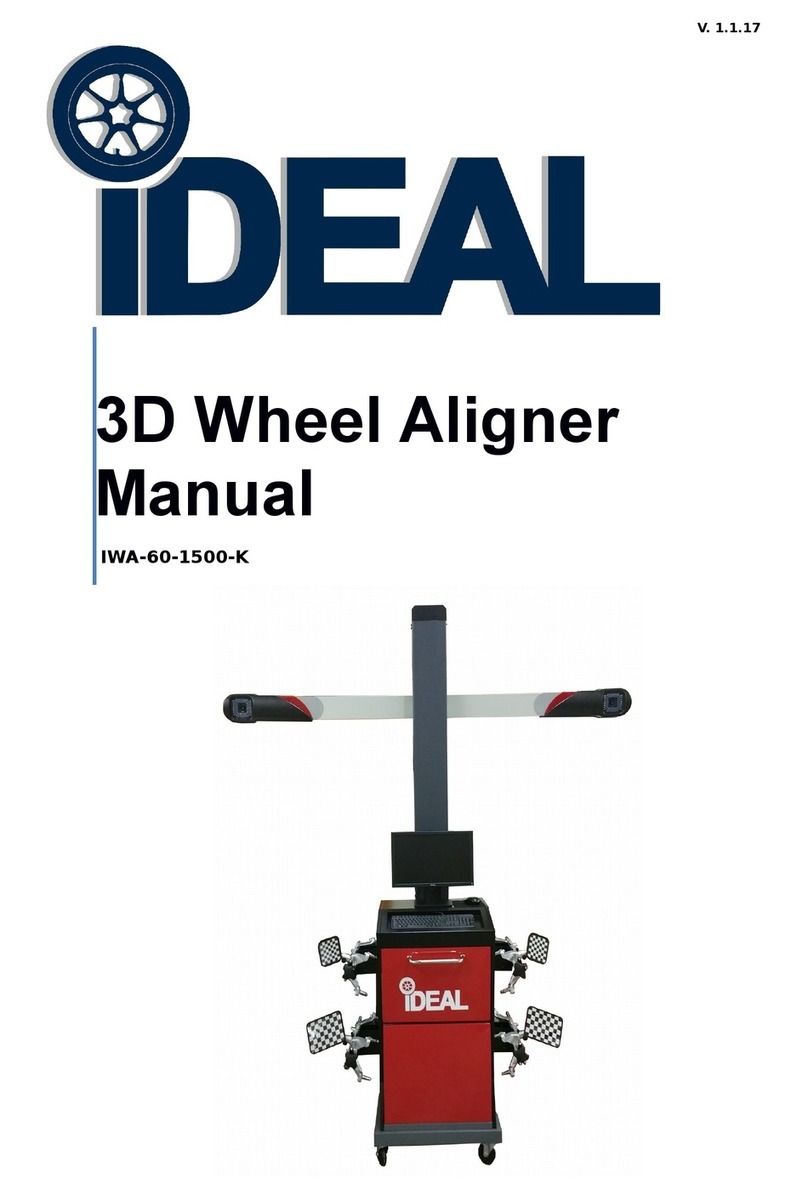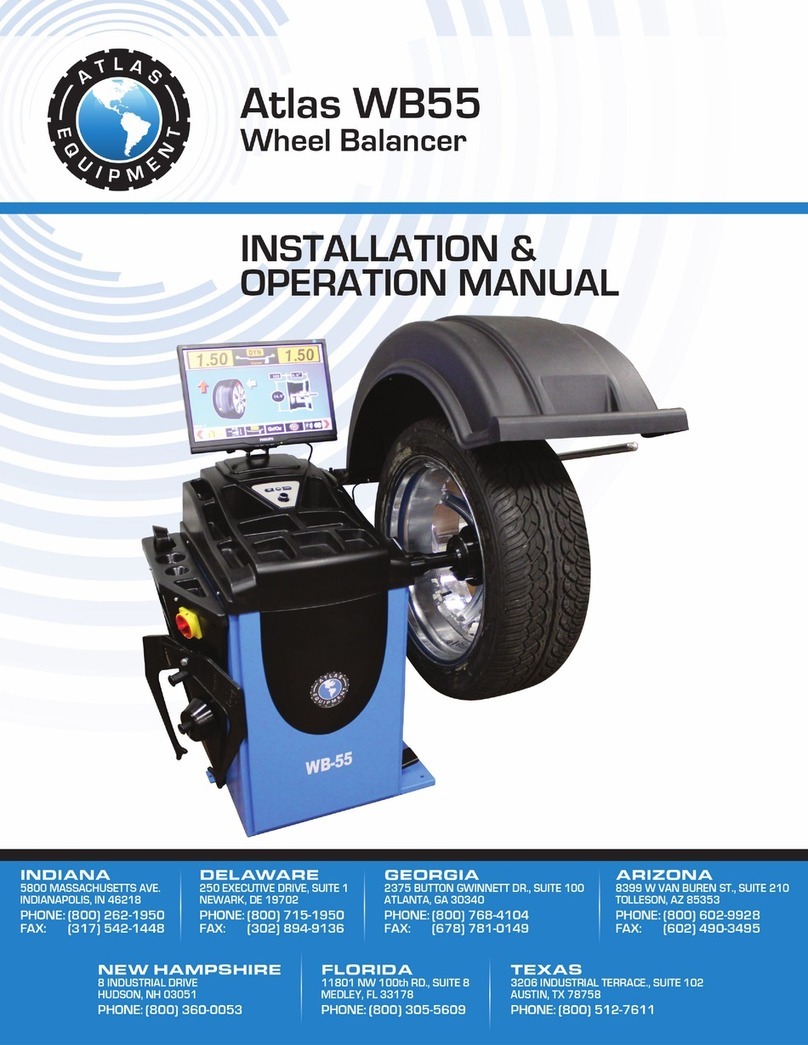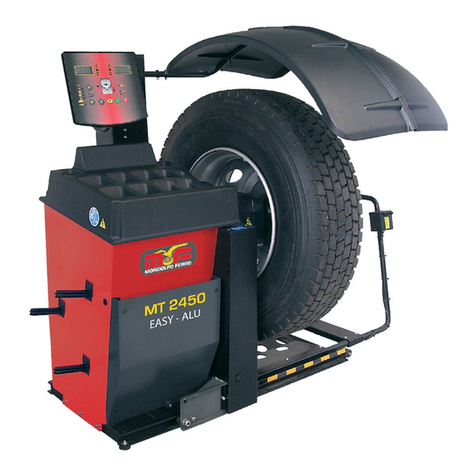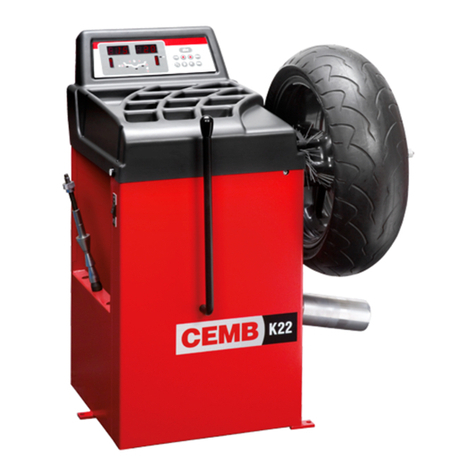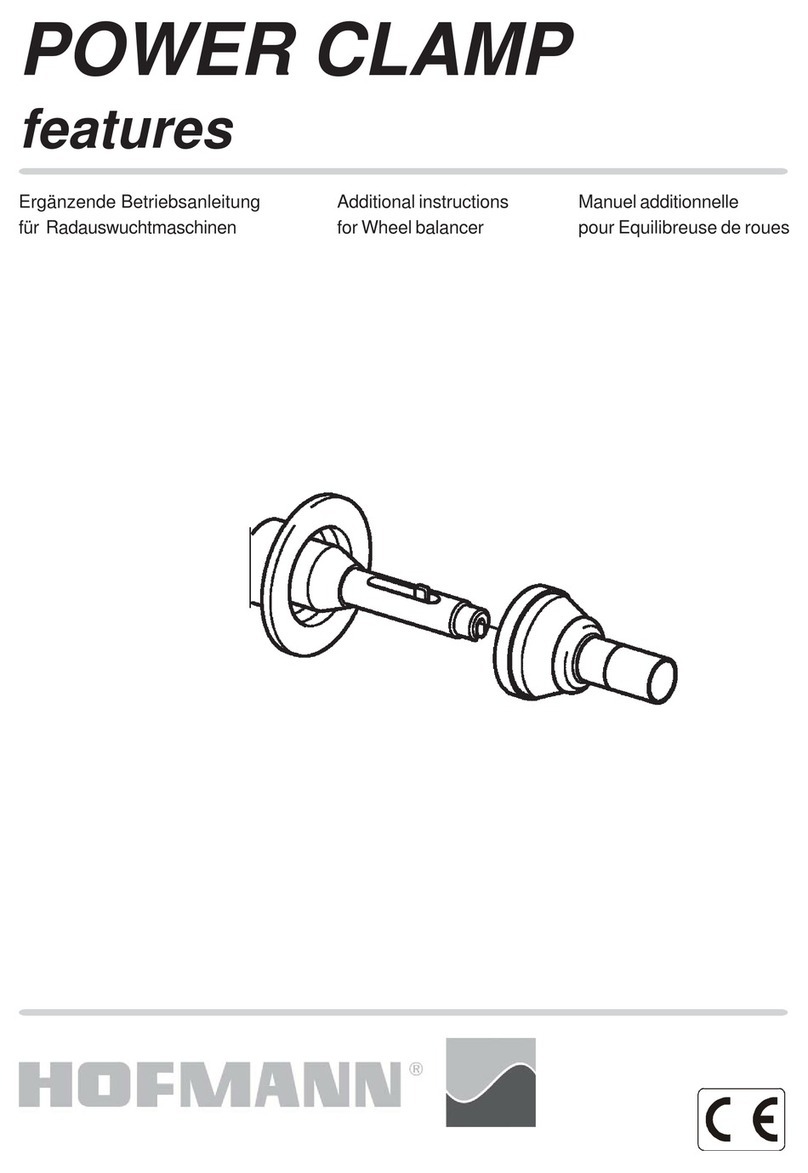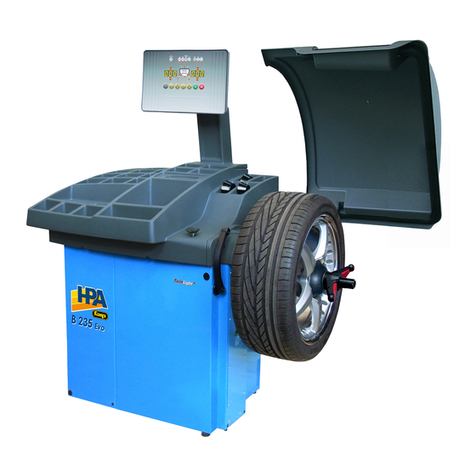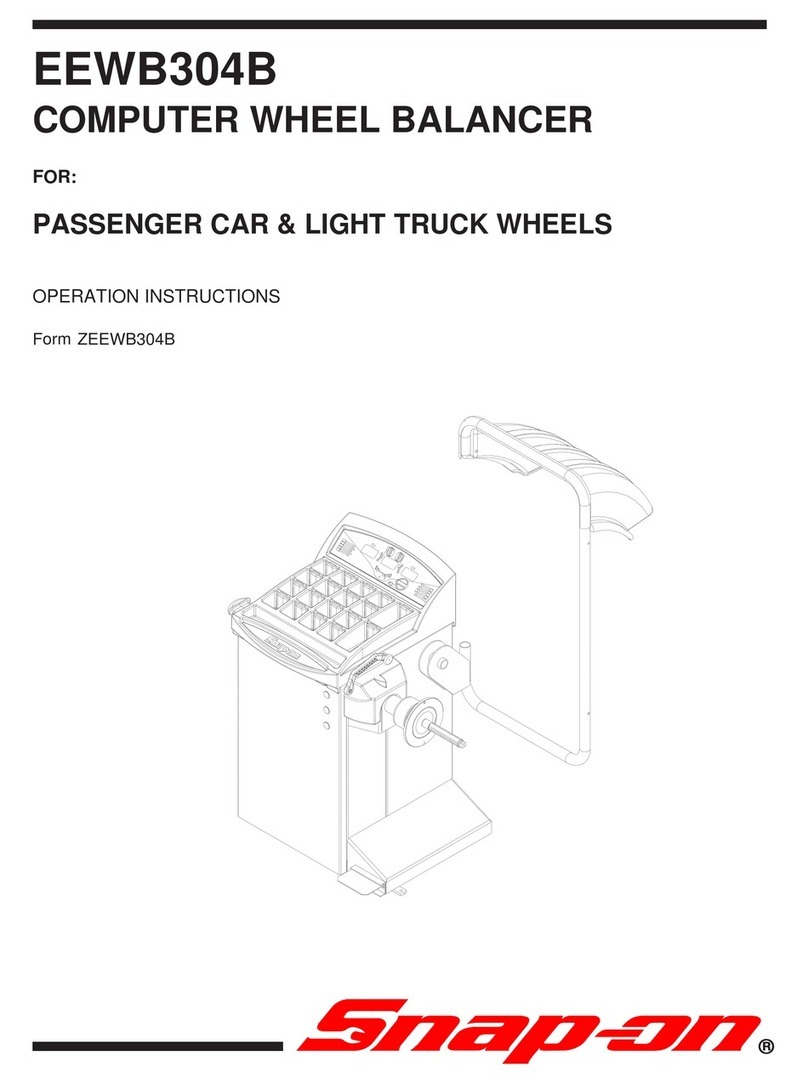IMPORTANT SAFETY INSTRUCTIONS
READ BEFORE OPERATING UNIT
•Keep the machine away from moist, corrosive and hot surrounding.
•Protective goggles, safety glasses, or a face shield must be worn by the operator. Care should
be taken to see that all eye and face safety precautions are followed by the operator. ALWAYS
WEAR SAFETY GLASSES.
•Keep guards and safety features in place and in working order.
•Wear proper protective clothing. Safety toe, non-slip footwear and protective hair covering to
contain hair is recommended. Do not wear loose clothing, or jewelry when operating the
balancer.
•If an extension cord is necessary, a cord with a current rating equal to or greater than that of the
equipment should be used. Cords rated for less current than the equipment may overheat. Care
should be taken to arrange the cord so that it will not be tripped over or pulled.
•Do not disable hood cover operation, or in any way shortcut safety controls and operations.
•Be sure that all wheels are mounted properly, the hub nut engages the arbor for not less than
four turns, and the hub nut is firmly tightened before spinning the wheel.
•Read and understand this manual before operating.
•Be sure the balancer is properly connected to the power supply and electrically grounded.
•Do not operate damaged equipment or if the power cord is cut or worn.
•Keep work area clean and well lighted. Cluttered and/ or dark areas invite accidents.
•Avoid dangerous environments. Do not use power tools or electrical equipment in damp or wet
locations, or expose them to rain and moisture
•Avoid unintentional starting. Be sure the balancer is turned off before servicing.
•Disconnect the balancer before servicing.
•Use only manufacturer’s recommended accessories. Improper accessories may result in
personal injury or property damage.
•Repair or replace any part that is damaged or worn and that may cause unsafe balancer operation.
Do not operate damaged equipment until it has been examined by a qualified service technician.
•Never overload or stand on the balancer.
•Do not allow untrained persons to operate machinery.
•To reduce the risk of fire, do not operate equipment in the vicinity of open containers or
flammable liquids.
•Adequate ventilation should be provided when working on operating internal combustion
engines.
•Keep hair, loose clothing, fingers, and all parts of body away from moving parts.
•Use equipment only as described in this manual.
•Use only manufacturer’s recommended attachments.
